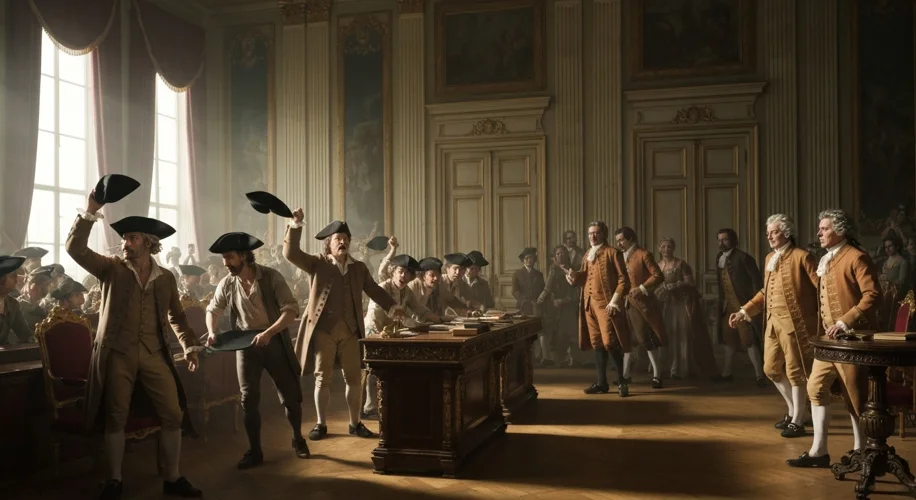The year is 1789. Paris is a tinderbox, the air thick with the scent of revolution. For centuries, France had been governed by an absolute monarchy, a rigid social hierarchy, and a populace increasingly burdened by poverty and injustice. The Bastille had fallen, the ancien régime was crumbling, and a new era was dawning. But as the Estates-General convened to address the nation’s woes, an unexpected convention emerged – one that would forever shape the language of political discourse: the seating arrangement.
Imagine the scene: the Salle des Menus-Plaisirs, a grand hall buzzing with anticipation and trepidation. Representatives from the three estates – the clergy, the nobility, and the commoners (the Third Estate) – gathered to debate the future of France. As they settled into their places, a curious pattern began to form. Those who championed radical change, who sought to dismantle the old order and establish a republic based on liberty, equality, and fraternity, gravitated towards the left side of the assembly hall. These were the ‘Patriots,’ the revolutionaries, the men who would later be known as the Jacobins and their ilk.
On the opposite side, the right, sat those who defended the monarchy, the established church, and the traditional privileges of the aristocracy. They were the ‘Royalists,’ the conservatives, the defenders of the status quo. Their allegiance lay with the king and the established institutions, and they viewed the rapid changes proposed by the left with alarm and suspicion.

This spatial division, born out of the practicalities of a crowded assembly hall, quickly became a potent symbol. The physical location of a deputy became a shorthand for their political ideology. “The Left” came to represent those advocating for reform, secularism, and popular sovereignty, while “The Right” became synonymous with tradition, hierarchy, and a strong executive power.
Why this particular arrangement? While no single, definitive decree dictated this seating, historical accounts suggest a natural inclination. The more ardent revolutionaries, often from the bourgeois or even peasant classes, found solidarity and perhaps a tactical advantage in clustering together on the left. Conversely, the more established figures, accustomed to positions of prominence and accustomed to the king’s presence (even if at a distance), likely felt more comfortable on the right. The very act of choosing a side solidified the emerging ideological divide.
Key figures like Maximilien Robespierre, the future architect of the Reign of Terror, would have been found on the left, passionately arguing for the rights of the common people. On the right, figures like the Comte de Mirabeau (though his loyalties were complex and shifted) might have initially sought to bridge the divide but were often associated with the more moderate, or even conservative, factions.
The French Revolution was a period of immense upheaval and transformation. The initial debates over taxation and representation quickly escalated into a full-blown revolution that toppled a monarchy, redefined citizenship, and sent shockwaves across Europe. The symbolic power of the left-right seating arrangement proved remarkably enduring. Even as the revolution took its own tumultuous turns, with factions rising and falling, the fundamental division in terminology persisted.
As new political movements emerged across the globe in the 19th and 20th centuries, the language of “left” and “right” was readily adopted. In Britain, the Whigs and Tories, and later the Liberals and Conservatives, found resonance in this established dichotomy. In America, the terms would evolve to describe the spectrum from liberal to conservative, a legacy directly traceable to those heated debates in Paris over two centuries ago.
It’s a fascinating twist of fate that a simple matter of where one chose to sit during a parliamentary session could give rise to a political vocabulary that continues to define our understanding of political ideologies today. The next time you hear discussions about the “left” and the “right,” remember those revolutionary days in Paris, when a seating choice in a crowded hall etched a lasting imprint on the very fabric of political thought. The echoes of the French Revolution are not just in its ideals of liberty and equality, but in the very words we use to describe our political landscapes.

